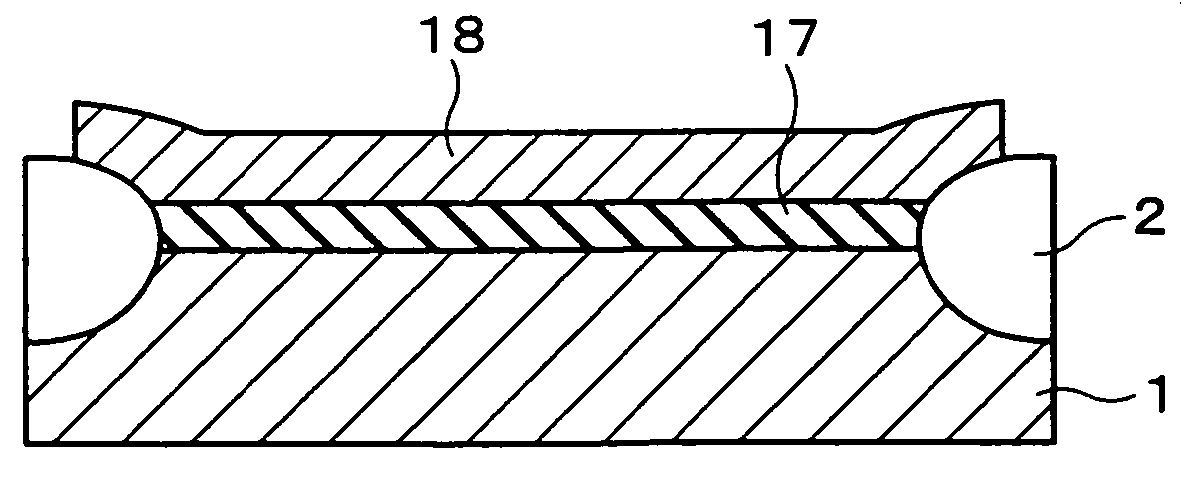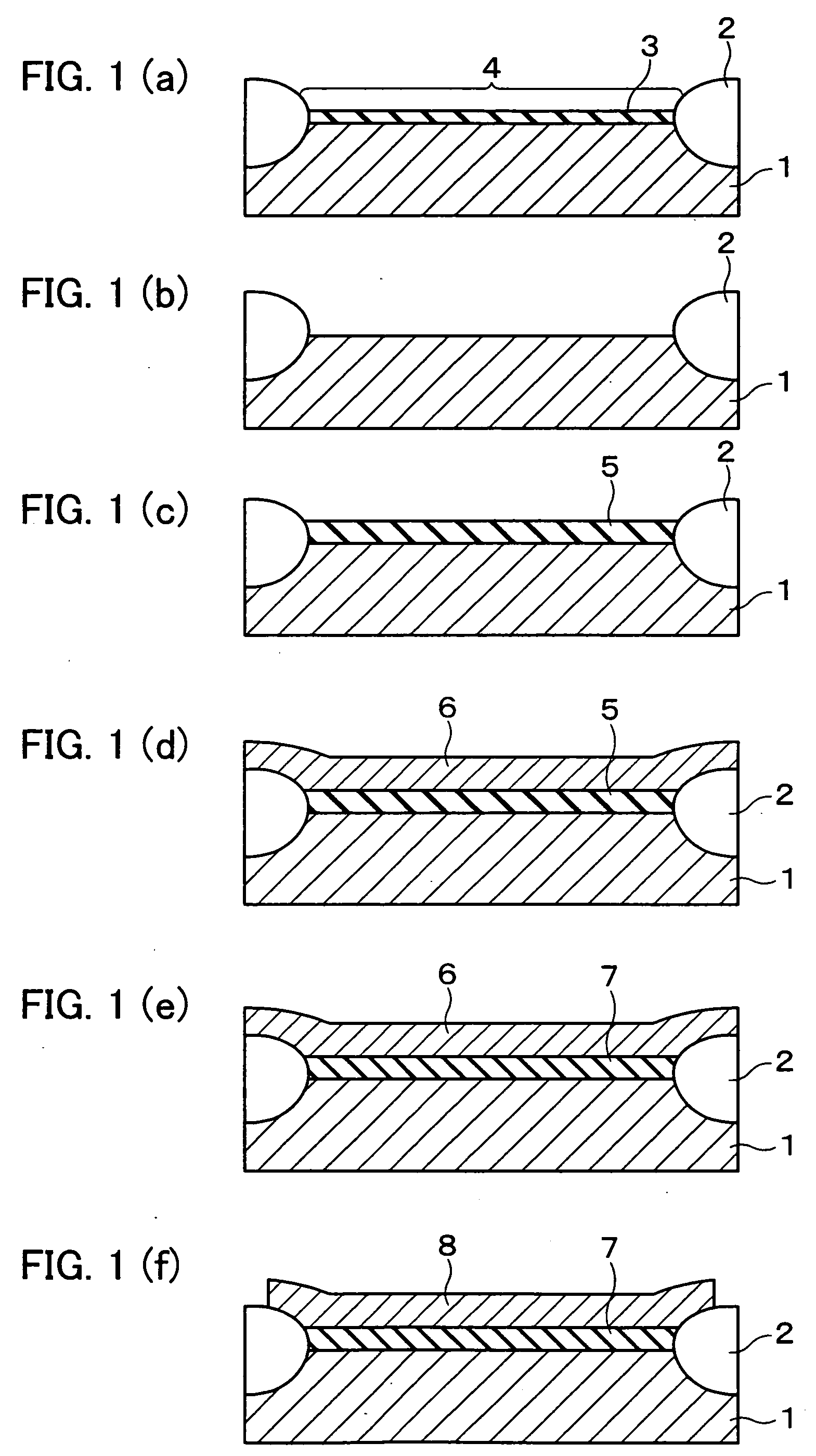Method for forming silicon dioxide film on silicon substrate, method for forming oxide film on semiconductor substrate, and method for producing semiconductor device
a technology of silicon dioxide film and substrate, which is applied in the direction of semiconductor devices, electrical devices, transistors, etc., can solve the problems of interface state and defect state disappearance of silicon dioxide film, and achieve the effect of increasing the rate of oxidization
- Summary
- Abstract
- Description
- Claims
- Application Information
AI Technical Summary
Benefits of technology
Problems solved by technology
Method used
Image
Examples
first embodiment
[0079] The following describes a first embodiment of the present invention, with reference to FIG. 1(a) to FIG. 7.
[0080] Described first with reference to FIGS. 1(a) to 1(f) is a method of forming a silicon dioxide film on a silicon substrate in accordance with the present embodiment. In the present embodiment, a step of forming an MOS capacitor by using a silicon substrate is described. Although the present embodiment assumes a case where the silicon dioxide film is formed on a silicon substrate 1, the present invention is also applicable, for example, to a case where the silicon dioxide film is formed on a ball-shaped silicon bulk or on a silicon film formed by epitaxial growth. In this specification, the member (e.g. silicon substrate 1) used as a base of the, silicon dioxide film to be formed is referred to as “silicon substrate”.
[0081] First, an isolation region 2 and an active region 4 were formed on the silicon substrate 1. On a surface of the active region 4, there was a n...
embodiment 2
[0134] The following describes a second embodiment of the present invention, with reference to FIGS. 8(a) to 12.
[0135] Described below with reference to FIGS. 8(a) to 8(e) is a method of forming a silicon dioxide film on a silicon substrate in accordance with the present embodiment. In the present embodiment, the chemical oxide film 5 is formed on the silicon substrate 1 by the steps of FIGS. 8(a) to 8(c), which are respectively identical to FIGS. 1(a) to 1(c) of EMBODIMENT 1. The description on the FIGS. 1(a) to 1(c) of EMBODIMENT 1 is also applicable to the steps of FIGS. 8(a) to 8(c) of the present embodiment.
[0136] After the chemical oxide film 5 was formed, in the present embodiment, the metal film 6 was not formed, but the wafer was heated in a hydrogen-containing gas in an electric furnace. In the present embodiment, the wafer was heated in a mixed gas of hydrogen and nitrogen (nitrogen containing 5% of hydrogen) at 450° C. for 20 minutes.
[0137] This heat processing is per...
embodiment 3
[0160] The following describes a third embodiment of the present invention, with reference to FIG. 14.
[0161] In order to manufacture a flexible liquid crystal display, which has been under development recently, it is necessary to form TFTs on a substrate made of organic substance such as PET. For this purpose, the TFTs must be formed at a low temperature of not higher than 200° C.
[0162] In the case of such TFTs, in general, a relatively high voltage is applied to the gate electrode. Therefore, a silicon dioxide film used as the gate oxide film of the TFTs must have a sufficient thickness so as to avoid dielectric breakdown.
[0163] Conventionally, the silicon dioxide film used as the gate insulating film of the TFTs has been formed through deposition by CVD. However, in order to deposit the silicon dioxide film by CVD, the substrate must be heated to a high temperature of 400° C. to 500° C. Therefore, depositing the silicon dioxide film by CVD is not suitable for forming the TFTs i...
PUM
| Property | Measurement | Unit |
|---|---|---|
| temperature | aaaaa | aaaaa |
| temperature | aaaaa | aaaaa |
| temperature | aaaaa | aaaaa |
Abstract
Description
Claims
Application Information
 Login to View More
Login to View More - R&D
- Intellectual Property
- Life Sciences
- Materials
- Tech Scout
- Unparalleled Data Quality
- Higher Quality Content
- 60% Fewer Hallucinations
Browse by: Latest US Patents, China's latest patents, Technical Efficacy Thesaurus, Application Domain, Technology Topic, Popular Technical Reports.
© 2025 PatSnap. All rights reserved.Legal|Privacy policy|Modern Slavery Act Transparency Statement|Sitemap|About US| Contact US: help@patsnap.com



